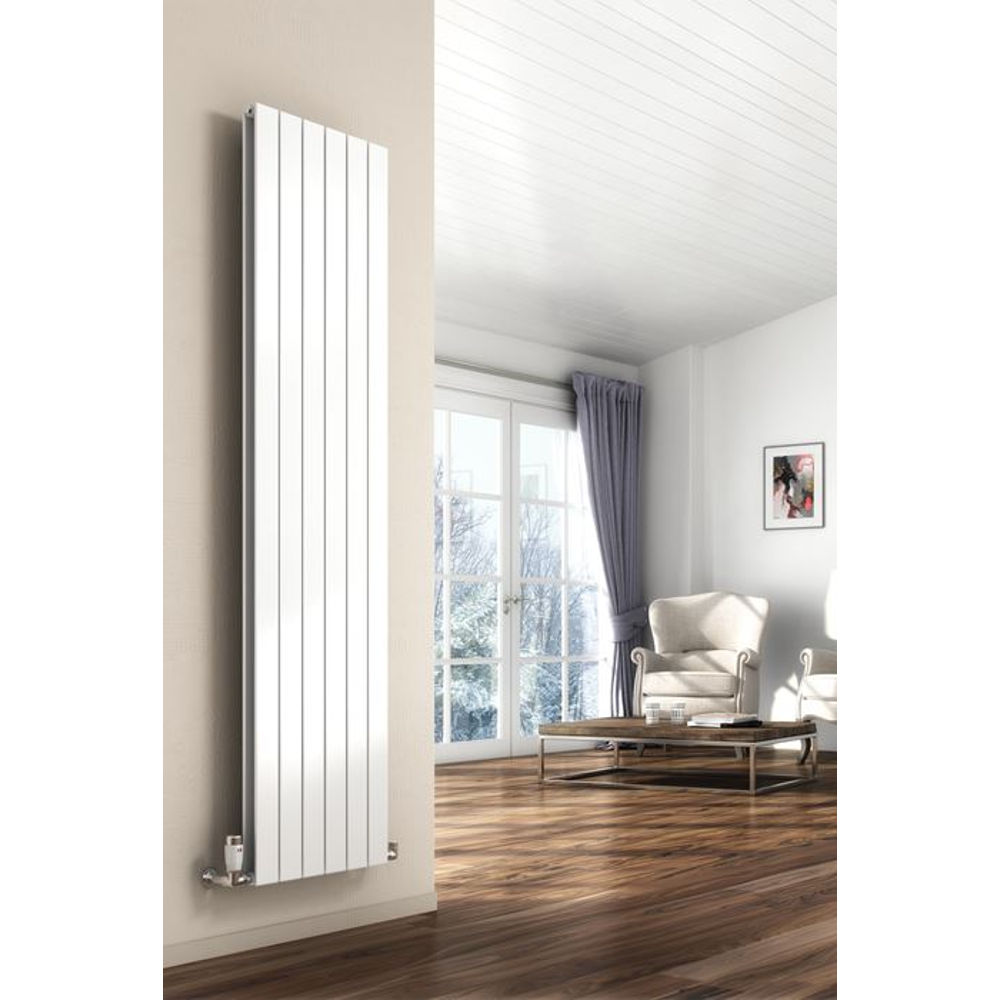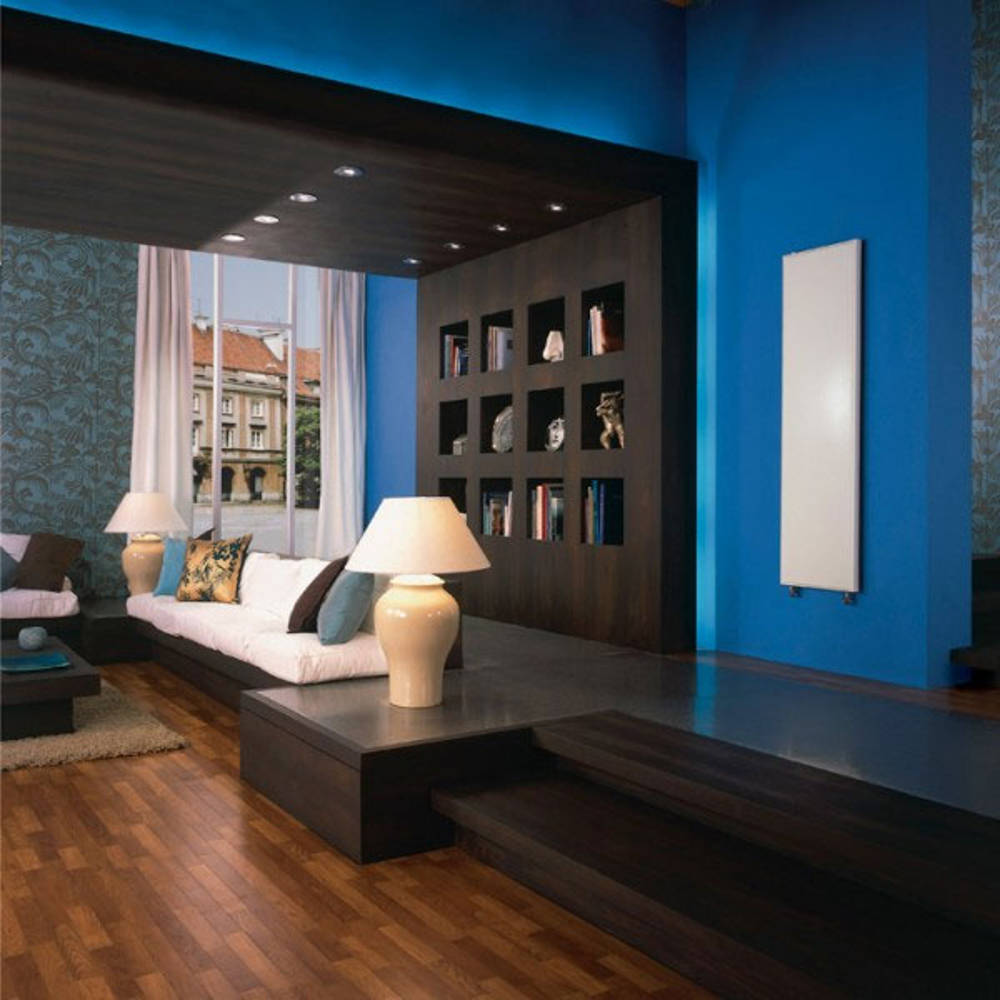Flat Panel Radiators : The Ultimate How to the Best Heating Benefits

Flat panel radiators have surged in popularity in recent years as the stylish and efficient alternative to traditional bulky heating units. With their slimline low profile designs and space saving abilities, it’s no wonder more and more homeowners are making the switch.
But with so many options out there, it can be tricky knowing where to start. This comprehensive guide covers everything you need to know about mastering warmth and style with flat panel radiators.
Flat Panel Radiators Best Heating Benefits
Flat panel radiators, as the name describes, are slim, flat heating units designed to mount discreetly onto walls. Unlike old-fashioned radiators with bulky pipes and fins, flat panels have a smooth surface that conceals the heating system inside.

This allows them to provide quiet and efficient warmth while blending seamlessly into any room with their minimalist aesthetic. Models come in a range of sizes from compact to cover full walls making them ideal for heating all areas of the home.
The benefits of flat panel radiators include:
- Discreet and modern design
- Rapid warm up time
- Even heat distribution
- Increased energy efficiency
- Reduced heating bills
- Easy maintenance
- Long lifetime
With so many advantages, it’s easy to see why flat panels are now the radiator of choice in many contemporary homes. This guide will explore everything about them in depth.
The Evolution of Home Heating: From Traditional to Flat Panel Radiators
To understand what makes flat panel radiators special, it helps to first look at the history of radiator technology and how we got to where we are today.
A Brief History of Radiators
Early central heating systems used bulky and inefficient stone and cast-iron radiators that slowly warmed up due to their high mass. These traditional styles have thick fins and noticeable pipes that tend to obstruct room spaces.
In the 1950s new lighter pressed steel and aluminium panel radiators offered faster warm up times and a less industrial look. But they still protruded quite far from walls.
It wasn’t until the 1990s that the first flat panel radiator designs started appearing offering both better aesthetics and performance.
The Rise of Flat Panel Radiators
Early flat panel models paved the way but early designs had some limitations in heat outputs. Manufacturing advances in laser welded seams and new extrusion methods over the past 20 years have vastly improved their heating capacity.
This enabled flat panels to move from niche designer items to become the new norm in homes today. Their sleek low profile and discreet presence suits the modern trend for clean and contemporary interior design.
Homeowners remodelling period properties are also switching bulky cast iron radiators for flat panel ones to sympathetically blend with modern additions.
Heating Trends for Today’s Homes
Energy efficiency is now a top priority for home upgrades. People want heating that warms their space rapidly without waste. Smart internet-connected radiator valves further optimize efficiency and comfort.
For open plan and multipurpose spaces, consumers need flexible heating. Flat panels offer modular sizing to heat any area. Dual fuel and electric flat panels also give instant warmth without central heating.
Ultimately flats panels tick all the boxes for contemporary living – efficiency, flexibility and subtler integration into modern architecture and decors.
Design and Aesthetics: Why Flat Panel Radiators?
One of the biggest advantages of flat panel radiators is how their pared back aesthetics subtly blend into modern interiors in a way bulky traditional designs can’t compete with.
Sleek and Modern Design
The minimalist low profile shape and neutral finishes mean flat panels sit discreetly in the background rather than demanding attention. This allows them to work with both contemporary and period properties.
Their smooth and streamlined silhouette contains no visible pipes or fins to clutter up walls. This helps rooms feel more spacious.
Variety in Styles and Finishes
While the essential design remains a flat rectangle, models come in different configurations. Horizontal and vertical orientations suit different spaces. Angled panels can even be used on sloped ceilings.
Finishes like aluminium, anthracite, stainless steel and glass in modern matte or metallic colours align with current colour trends. There are flat panels radiators to complement any style.
Integration in Contemporary Interiors
Discreet wall mounting means flat panels don’t encroach on room floors space. Their simple shape and muted colours integrated sympathetically with minimalist architecture and decors.
For more industrial and retro looks, flat panels inspired by historical designs but with updated performance offer the perfect blend of classic styling and modern tech.
Ultimately flat panels offer both immense flexibility and unity in design. Their slim shape adapts well but retains a cohesive and subtle presence.
Types of Flat Panel Radiators
With a wide range of flat panel designs now available, it’s important to pick the right direction, size and look to match your interior plan.
Horizontal or Vertical
The orientation of a flat panel radiator has a significant impact on its performance and visual effect. Horizontal panels run parallel to floor level and are better for heating rooms. Vertically aligned panels work well heating rising heat when mounted under windows.
Bespoke and Designer Options
Numerous companies now offer customized flat panels where you specify dimensions and finish. This allows perfectly sized units for alcoves or non-standard spaces.
Select designer models in special finishes like metallic add a touch of luxury. Curved flat panels also give added flair.
Towel Radiators for Bathrooms
Flat panel towel radiators with integral rails for hanging towels or robes help dry damp items in bathrooms. Their waterproof surfaces also suit damp environments.
Choosing flat panels that align with your rooms shape and furniture positions ensures both optimal heating coverage and interior harmony.
Choosing the Right Flat Panel Radiator for Your Home
Selecting the perfect flat panel comes down to finding the right balance of aesthetics, heating power and dimensions for each space.
Sizing by Heat Output
The main technical factor is the heat output rating which is measured in BTUs (British Thermal Units). This indicates how much heating power the radiator provides.
Higher BTU ratings give more heat. As a guide, you need around 10 BTUs per square foot for typical rooms. Radiator size calculators can help select the ideal model.
Material Choices
Standard materials like aluminium and steel offer great performance at reasonable cost. Models in stainless steel, anthracite or more expensive metals add luxury but cost more.
Matching Radiator and Room Styles
Consider what styles will complement your architecture and interior finishes. Property age, room use and decors influence the ideal radiator specifications.
For example, vertical stainless steel flat panels work well with full height glass walls in contemporary rooms. Horizontal white aluminium radiators better suit traditional cottage interiors.
By factoring in both heating requirements and aesthetic preferences, you can achieve both comfort and style with any flat panel radiator.
Installation Insights: Setting Up Your Flat Panel Radiator
Flat panel radiators are designed for fast and simple installation. Here’s an overview of the process:
DIY or Professional Installation?
If you have good DIY skills, installing flat panels yourself can save on labor costs. But for connecting to central heating systems, a heating engineer provides expertise.
Electric or dual fuel models just need mounting as the power connections are straightforward.
Step-by-Step Installation Guide
- Survey the wall area and mark bracket locations
- Fix wall brackets securely and level
- Lift radiator onto brackets
- For water-fed radiators, connect valves to pipes
- Bleed radiator to remove trapped air
- Check for leaks and secure to wall
- Test heating and make any adjustments
- Add any front panels or covers
Safety and Compliance
Ensure wall types suit radiator weight. Fix brackets into studs or masonry, not just plaster. Follow all building codes for heating systems.
With good planning and the right skills, installing flat panel radiators is a relatively simple weekend upgrade project.
Efficiency and Performance: Maximizing Your Radiator’s Potential
It’s important to understand how to optimize your flat panel radiators so they provide comfort and savings for years to come.
Energy Efficiency
Modern flat panel radiators convert over 90% of their energy input to heat. Look for models with A or A+ energy rating labels for the best efficiency.
Improving Efficiency
Take advantage of their rapid heat up – use thermostatic controls to only heat rooms when needed. Close doors to avoid wasting heat.
Avoid bulky objects obstructing panels which blocks heat distribution. Bleed regularly to prevent sludge build up.
Maintenance and Care
Keep flat panels clean by dusting and wiping down occasionally to maintain appearance and performance. Check for leaks during routine servicing.
With some simple best practices, flat panel radiators will operate economically and effectively for their full lifespan.
Cost Considerations: Budgeting for Flat Panel Radiators
What can you expect to pay for installing flat panel radiators? Here are the key factors influencing costs:
Price Range
Basic aluminium or steel flat panel models start from £150. Larger bespoke, designer or premium finished units run from £500 to £1500+
Electric models don’t need plumbing so eliminate this cost. Professional installation costs around £500+ per radiator.
Return on Investment
The energy savings from properly sized and efficient flat panels leads to lower heating bills. This usually offsets any higher initial investment in under 5 years.
Comparing Models
When comparing prices, look at heat output specs, materials and energy ratings. Higher priced models often have superior efficiency and longevity.
Avoid choosing radiators only on price alone. Expert retailers can help select well-built and correctly sized flat panels that offer long-term value and performance.
Innovations in Radiator Technology
As home technology advances, radiators are also getting smarter, more sustainable and design focused.
Smart Home Integration
New smart radiator valves allow app and voice control of heating from anywhere. Geofencing turns down radiators when you leave home to save energy.
Eco-Friendly Options
Some companies now offer flat panel radiators made from recycled aluminium or use renewable energies in manufacturing. Expect more environmentally conscious options.
Advances in Design
With better manufacturing techniques, companies can now produce bolder flat panel designs in shapes like waves and zigzags or ultra slim depths.
Expect to have an ever wider selection of flat panel solutions for your home heating needs in coming years.
Case Studies: Real-Life Transformations with Flat Panel Radiators
Here are some real-world stories highlighting the benefits of installing flat panel radiators:
Colonial to Contemporary
Karen updated her 1920s colonial home with horizontal white aluminium flat panels to complement the clean and bright interiors. This removed the outdated cast iron radiators without compromising period charm.
Warming a Home Office
Ryan installed a compact anthracite flat panel radiator in his chilly basement home office. The responsive warmth lets him work in comfort without taking up valuable floor space.
Discreet Bathroom Heating
When designing her open plan bathroom, Clara selected a slim vertical stainless steel towel radiator. As well as gently drying towels, this provides warmth without interrupting the seamless interior design.
Heating an Extension
To provide supplementary warmth in their new garden room, Lucy and John opted for an electric flat panel. This gave them instant heat without the need to extend plumbing pipes outside.
Expert Opinions
Heating specialists overwhelmingly recommend flat panel radiators for most home upgrades. Compared to bulky original designs, flat panels tick all the boxes for efficiency, performance and integration into contemporary living spaces.
For older homes, experts advise combining flat panels with sympathetic period-style covers to retain heritage charm. This allows residents get the best of both worlds – classic looks and modern heating comfort.
Conclusion
This guide has explored all aspects of flat panel radiators from their many benefits to installation and operation. Here are the key conclusions:
- Flat panels provide an efficient and discreet heating solution ideal for contemporary homes and remodelling projects.
- Their diversity in sizes and styles means you can find designs suited to heating any space while matching your preferred aesthetic.
- When correctly sized and paired with smart controls, flat panels create a comfortably warm environment while reducing energy waste.
- A basic flat panel upgrade is achievable as a DIY project for most homeowners and adds value to a property.
With their versatility, efficiency and design flexibility, flat panel radiators are an excellent option for stylish and effective home heating.
Frequently Asked Questions
Here are answers to some common flat panel radiator questions:
Are flat panels hard to install?
Flat panels are designed for easy DIY installation in most homes with some plumbing knowledge. Professional help is recommended connecting to central heating systems.
How much heat do flat panels give off?
This depends on the BTU rating. Well sized models provide comfortably warm and even heat distribution in rooms.
Do they work with any heating system?
Most flat panels are designed for central heating systems. Electric and dual fuel models allow use with any power source.
Are flat panels expensive to run?
No, their efficient design means they use less energy than traditional radiators to heat a room. Operating costs are low.
Can you get flat panels in any size?
Companies offer an extensive range of standard sizes. Custom-made bespoke panels are also available to perfectly fit any space.
Do flat panels require special maintenance?
Flat panels are relatively maintenance free. Just occasional dusting and wiping to keep their appearance. Annual bleeds remove air.
Hopefully this guide has covered all you need to know about adding stylish and efficient flat panel radiators into your home. With their modern discreet designs and affordable upgrade potential, now is the perfect time to embrace flat panel heating.



